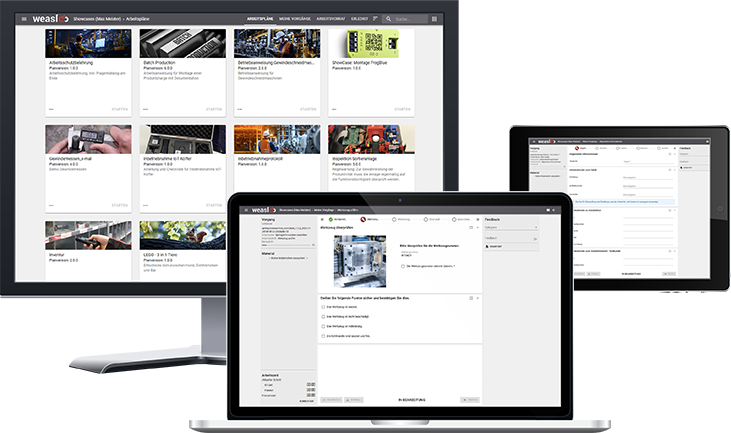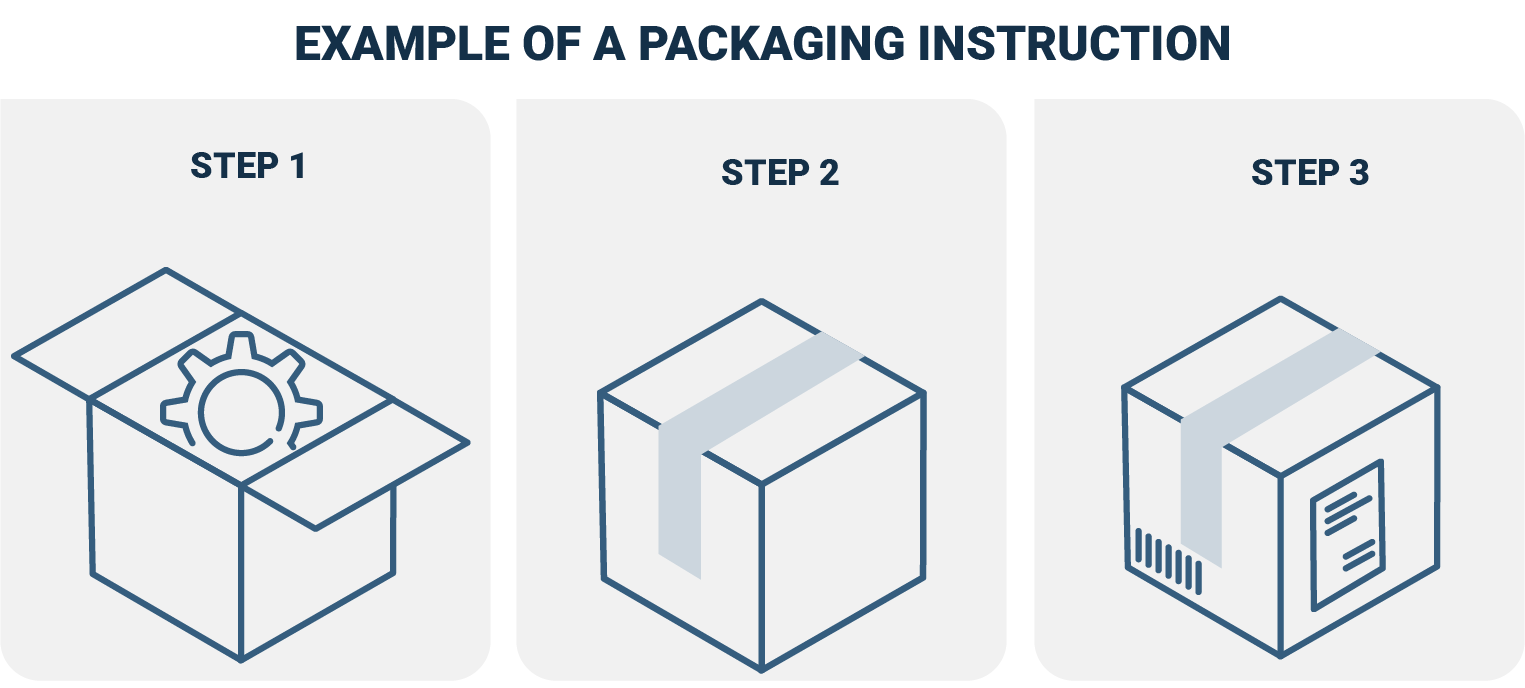Definition: What are packaging instructions?
Packaging instructions are a written document or specific instructions for the correct packaging of a product. It is of particular relevance in logistics, shipping and production.
What belongs in a packaging instruction?
Packaging instructions contain a whole range of information, which can vary depending on the industry, the product to be packaged, guidelines and specifications, etc. This information includes, for example
- the type of packaging - for example cardboard, wood, bubble wrap, etc.
- the packaging materials to be used - for example film, filling material, adhesive tape, etc.
- the quantity and arrangement of the products in the packaging
- any necessary markings - for example labels, hazardous goods signs, etc.
- special requirements - for example for sensitive or dangerous goods
- the packaging units - for example how many units are to be packed in a box
- the dimensions and weights of the packaged units
- security measures such as stretch film, edge protection, etc.
- the attachment of the delivery bill
The packaging instructions can also contain details about the delivery bill itself. These include, for example
- the order number
- the delivery address
- the part number and part description
- the total delivery quantity and partial quantity per package
- the number of packages
- the weight per package
- the goods tariff number and origin of goods
- if applicable, information on dangerous goods in accordance with legal regulations
Summary:
- packaging type and materials such as cardboard, film, filling material, adhesive tape
- information on units and properties such as number of items per unit, dimensions, weight, security measures
- delivery bill and shipping details incl. order number, delivery address, item information, quantities, dangerous goods data
An example of clearly regulated packaging instructions
It is quite possible that packaging instructions in your company really only apply and fit your company. Beyond this and as soon as certain goods are involved, binding regulations may apply. A common example can be found in dangerous goods legislation or, more specifically, in the ADR - the European Agreement concerning the International Carriage of Dangerous Goods by Road.
This defines packaging instructions as specific legal regulations for the packaging of hazardous substances. Depending on the hazardous substance and means of transport, these packaging instructions are identified by codes such as P001, LP903 or P908. For liquid substances, for example, P001 defines which inner and outer packaging is possible, which volumes are permitted and when additional ventilation equipment must be used.
Summary:
- ADR regulations govern the packaging of dangerous goods
- packaging codes such as P001 or P908 specify concrete regulations
What are the advantages of packaging instructions?
Like any other instruction, the packaging instruction makes standardization possible. It provides your employees with clear guidelines and helps to achieve consistent packaging quality and a low error level.
As an instructional document, it helps both experienced and new employees to quickly familiarize themselves with the work processes. At the same time, the packaging instructions ensure that the result is always a correctly packaged product that is optimally protected against transport damage, breakage or moisture.
Of course, packaging instructions also support compliance with all standards, guidelines and specifications. This means you are on the legally compliant side when it comes to hazardous goods or export and customs regulations.
And last but not least, the conscientiously processed packaging instruction is also a documentation tool that can provide information on whether all instructions have been followed and all information requirements fulfilled. This creates better traceability in the event of audits and complaints.
Summary:
- standardization and QA of packaging through clear, uniform specifications
- training aid and work simplification for all employees
- legal certainty and traceability for standards, specifications and audits
Goals of the packaging instruction
Let's summarize once again what the packaging instruction aims to achieve.
- By standardizing the packaging, it simplifies the delivery process and increases the protection of the goods.
- Standardization also leads to greater efficiency in the logistics chain.
- Packaging instructions should also ensure that you always pack in accordance with the applicable standards and guidelines and that you can prove this if required.
Simply provide packaging instructions digitally
Packaging sounds so simple, but it can involve complex, specification-driven processes. You can optimally support these processes by relying on digital instructions - for example with our weasl worker assistance system.
Sounds exciting? Then be sure to take a look at our free showcase environment.


